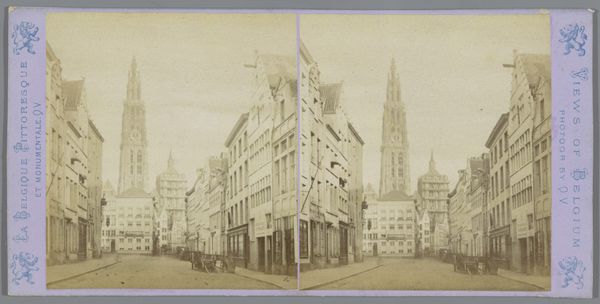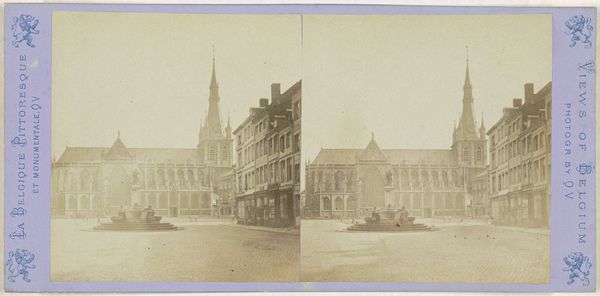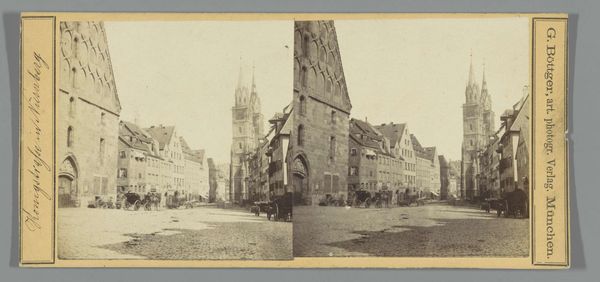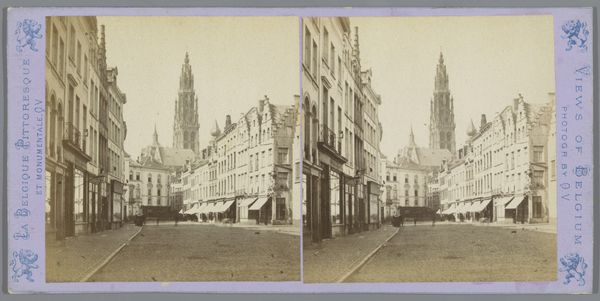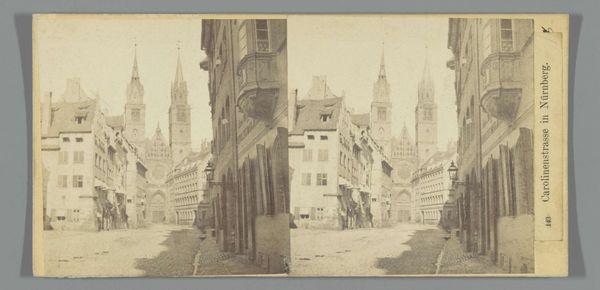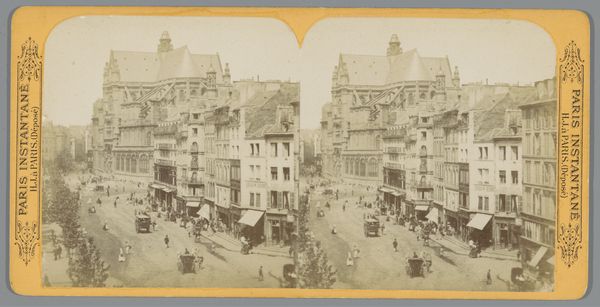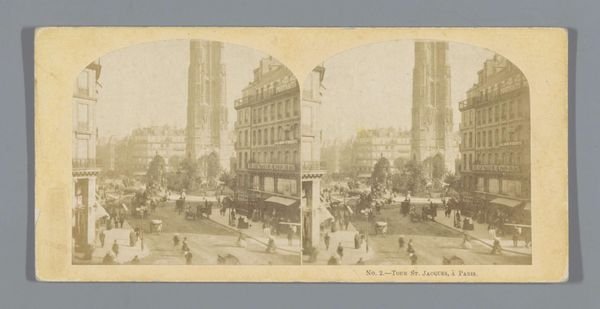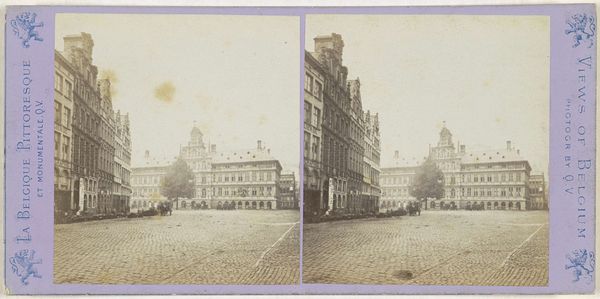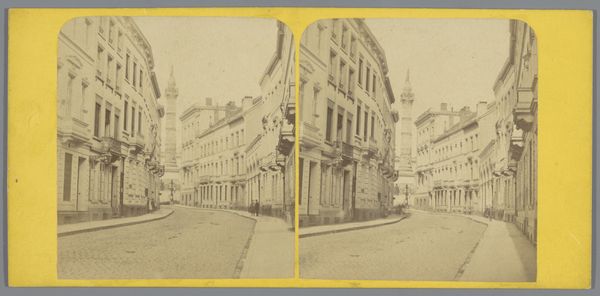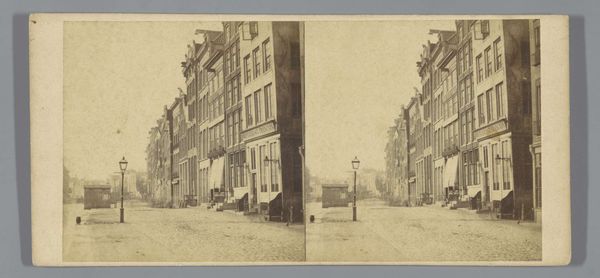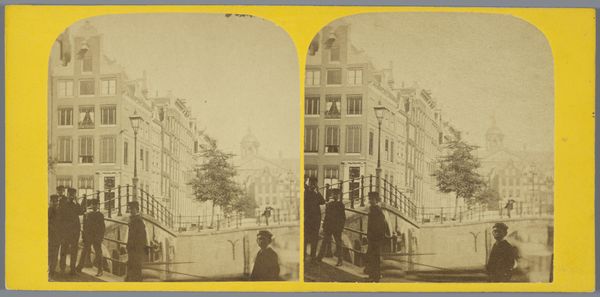
Dimensions: height 85 mm, width 170 mm
Copyright: Rijks Museum: Open Domain
Editor: Here we have Alexander Wilson's "Gezicht op High Street te Oxford," a gelatin silver print from around 1850-1880. It’s a rather quiet scene, a streetscape, and I'm curious about its context. What strikes you about this image? Curator: Immediately, I'm drawn to the process of creating this gelatin silver print. Think about the labor involved in the mid-19th century to capture such an image, developing the materials. The composition isn't just a snapshot of a street; it represents a deliberate engagement with the burgeoning industrial processes. Editor: Industrial processes? In what way? Curator: Well, the reproducibility of photography itself reflects industrialization. Gelatin silver printing allowed for greater detail and tonal range than earlier photographic methods, signifying technological advancement impacting art. Look at the precision – the way architecture is captured in detail, it speaks to how technology can refine representation, and further enable production and control of that image for economic gain. Editor: That’s interesting! I hadn’t thought of the printing process as part of the story of the artwork itself. Curator: Consider the societal context. This photograph, likely intended for mass consumption as part of a stereoscopic view, catered to Victorian desires for exploration and knowledge through accessible images. The ‘street’ as subject connects to evolving notions of urban space shaped by capital and labor. Editor: So, it's not just a pretty picture; it's about how industry and consumerism influenced art-making. Curator: Exactly. And what do you think the labor division might look like, in the printing workshops, compared to say painting ateliers? Editor: Wow, thinking about the materials and the way the image was created adds a whole new layer. I see so much more now. Thanks for shedding light on that. Curator: My pleasure. Examining art through the lens of its making reveals how intertwined artistic creation is with the broader material and economic conditions of its time.
Comments
No comments
Be the first to comment and join the conversation on the ultimate creative platform.
